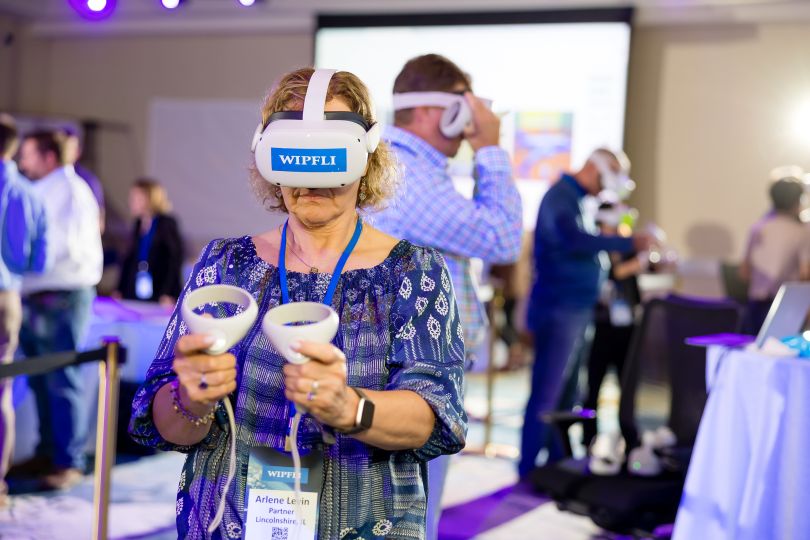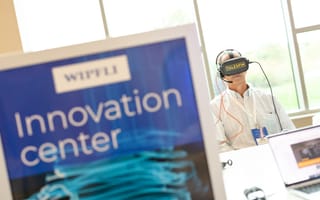Being raised by small business owners sparked Kelly Fisher’s interest in the world of business from a young age. Long before pursuing her undergraduate, master’s and law degrees focused on international business, she listened to her parents talk openly about their decision making, financial considerations and the highs and lows of their auto shop business.
As her career progressed, Fisher found her passion for the transformative impact of technology. Now, as chief practice partner at Wipfli, her deep understanding of business, passion for technology and commitment to innovation have helped her thrive.
After joining Wipfli following a 2015 merger, Fisher had the opportunity to become the firm’s head of tax and drive technological transformation as the firm was rapidly expanding its practice not only in terms of number of clients but also in staffing size, geographic footprint and the diversification of its services.
“Organizations growing that fast have a lot of opportunity to improve processes and relook at their technology,” Fisher said. “We stepped back and considered what we were focused on from both a client and associate experience perspective.”
With that success under her belt, Fisher then stepped into her role as Wipfli’s chief practice officer, which aligns with the responsibilities of a chief operations officer at most organizations. She oversees all client-facing services and people along with innovation and transformation for the firm.
Fisher’s journey highlights the value of continuous growth and learning in an organization like Wipfli, where client needs and the business landscape change regularly. For her,fostering a culture of continuous learning is rooted in a balanced perspective that goes beyond technical expertise. In order to best meet the needs of each client, associates need to be prepared to adapt to new regulations, environmental changes and evolving client needs.
“Our clients are evolving daily, and so are we,” Fisher said. “We’re on the lookout for people who thrive on perpetual growth and skill development in their roles.”
“Our clients are evolving daily, and so are we. We’re on the lookout for people who thrive on perpetual growth and skill development in their roles.”
Built In learned more about Fisher’s journey at Wipfli, her commitment to innovation and what’s ahead for the forward-thinking firm.
My personal brand is being at the forefront of innovation and strategy, so I’m generally trying to push the boundaries of what we’re doing. It’s a big key strategy for us as an organization. Our firm is over 90 years old, but when you look at the offerings that we have, everything is focused on the needs of our client base. So we are positioned to be at the forefront of needs from a market and trend standpoint because our clients are looking for us to give us the advice they need to move forward.
As an organization, we have a vision for balancing the benefits of innovation with risk and uncertainty. We were founded as a CPA firm, and that level of trust people have in their CPAs is a huge part of our brand as a profession. Our commitment to quality and understanding outcomes paired with an innovative, leading edge mindset is a differentiating factor for us.
“We have a vision for balancing the benefits of innovation with risk and uncertainty.”
How do you balance an innovative mindset with risk aversion?
We’ve spun up things like innovation centers and we do a ton of education for people to help support their curiosity. There’s a lot of bottom-up innovation — you can test things that don’t have to become operational right away. By having a forum to create proofs of concept and understand the risks and values, there are a ton of things an organization can do while not putting the business at risk. Having that environment to create helps us avoid being short-sighted and potential disruptions.
Especially with some of the things that have been happening from an AI standpoint, we could see parts of the business where we could be the first ones to jump in, test and adopt. But we want to make sure that we are picking the right groups, use cases and environments to succeed, so creating space for that helps move things forward faster and more effectively.

How is Wipfli moving forward with AI?
When we consider the yin and yang and the light and dark of AI, I generally fall on the light side. I think it is going to be a tool that will help us solve some really big, really hard problems. We urge our clients to embed this mindset in their existing strategic planning, pushing them to rigorously question their approaches and business models. It’s crucial to understand that this can’t operate in isolation; it’s about integrating and challenging your current approach.
Part of our value stream is getting our associates, clients and board really educated in AI because you can’t mitigate risks that you don’t know or don’t understand. All of our associates who are participating in any of our pilots have to go through ethical AI training, and we have a lot of different requirements for people because of that kind of vision and strategy for us to stay grounded in pragmatic application.
“Part of our value stream is getting our associates and our clients and our board really educated in AI because you can’t mitigate risks that you don’t know or don’t understand.”
Organizationally, we are doing a lot of testing, experiments and pilots across the firm spanning pretty much every business unit. We’re exploring available, out-of-the-box solutions that we think are interesting, but on the innovation side we’re also building a lot of our own AI solutions focused on specific areas of the business. While building, we rope in associates and people from different parts of the firm to shape everything from requirements gathering to early testing and feedback.
It’s unbelievable how fast the space is moving, so anybody who thinks they’ve got everything figured out and knows the perfect configuration — that’s a bit of a bold statement to make with how quickly everything’s moving.
A lot of our clients are feeling overwhelmed on where to start or what to do because of how much hype is out there, particularly with a lot of the generative AI stuff. We are balancing educating clients with revisiting their strategies and the long-term impacts AI can have on their product, positioning or staffing model in the future. A lot of businesses could easily get caught into buying the thing everybody else is doing or spend a lot of money chasing solutions without thinking about where they want to be on the adoption scale or differentiation, so we spend a lot of time helping them understand what their organizational posture should be.
How does Wipfli support learning and advancement for the team?
One of our pillars is curiosity. We have dedicated learning and development teams, but we also know one size never fits all in growth and development — it’s a super personalized journey.
“We know one size never fits all in growth and development — it’s a super personalized journey.”
We support continuing education through certifications and master’s programs, but our learning and development isn’t just focused on technical areas. We do a lot of work around leading yourself, the business and others with a holistic focus on mindset and curiosity.
But classroom learning is never going to get you the whole way there. We also think that you have to do a lot through community learning, whether that’s in our business resource groups, industry groups outside the organization or experiential learning at the team level. Be it internal or external community, self-guided learning or a live classroom, we have it as part of our repertoire because everybody learns in different ways and thrives under different models.






